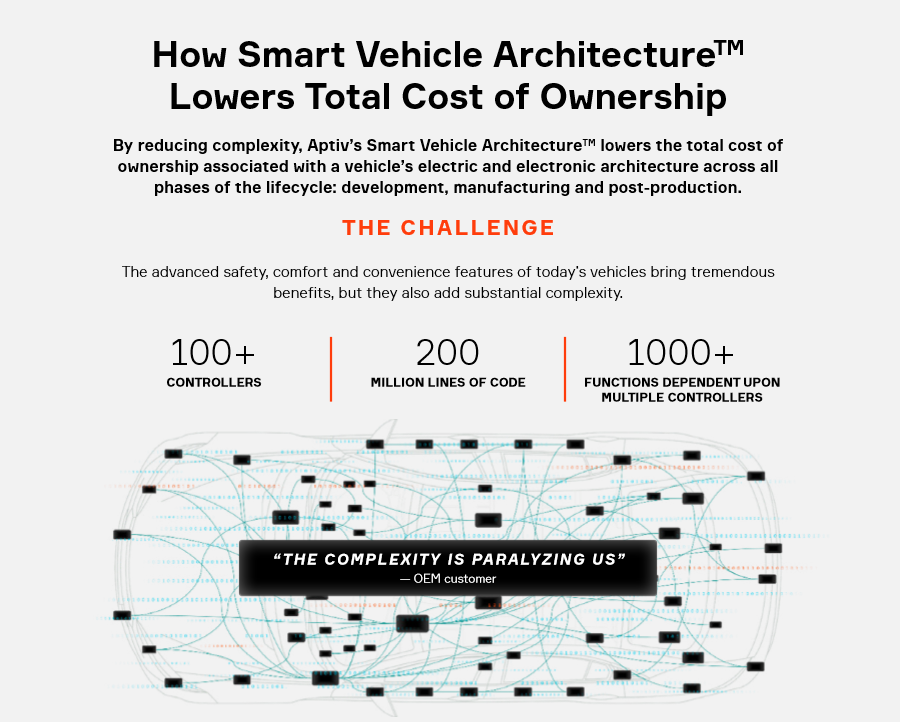How SVA™ Reduces Total Cost of Ownership
Smart Vehicle Architecture™ is Aptiv’s approach to building the next generation of vehicles – a new architecture designed from the ground up for today’s feature-rich vehicles and tomorrow’s highly automated vehicles. Just as importantly, SVA reduces costs through all phases of the vehicle life cycle: development, manufacturing and postproduction.
Development
SVA™ allows developers to create software completely independently of the underlying hardware. Taking cues from the iterative development techniques used in agile methods, SVA allows developers to upload updates
dynamically. Testing and validation become easier to manage, and developers can go to market faster with richer features.
Taken together, Aptiv estimates these techniques cut system integration and testing costs by 75 percent and lower warranty costs by 75 percent as well.
Manufacturing
SVA™ also reduces costs in the manufacturing phase in two important ways.
The first is through up-integration. Today, functions are distributed across multiple ECUs located throughout a vehicle. When those are consolidated into a smaller set of domain controllers, the vehicle is able to shed multiple microcontrollers, power supplies, housings, and copper wiring — all while maintaining or even increasing compute capabilities.
The second way it reduces costs is through direct labor reduction. For example, because SVA’s zone controllers simplify the physical complexity and connect directly to the sensors, wiring harnesses can be limited to 2.5 meters or less, which means our customers need just one or two people to install them. Compare that to the 10 or more people it takes to install today’s most complex architectures, and OEMs could save 50 percent in labor costs.
Postproduction
SVA™ continues to reduce costs even after a vehicle has left the factory. With software abstracted from hardware, vehicle manufacturers can build a library of certified software — an “app store” for the car, in effect. These
apps can include software developed by the OEM, by Aptiv, or even by a third party. Vehicle manufacturers and software developers can upgrade software in vehicles throughout its life cycle using over-the-air (OTA) updates. This lowers warranty
costs by fixing issues without having to go to a dealership, and results in greater brand loyalty and customer satisfaction.
Click on the infographic for more detail.
